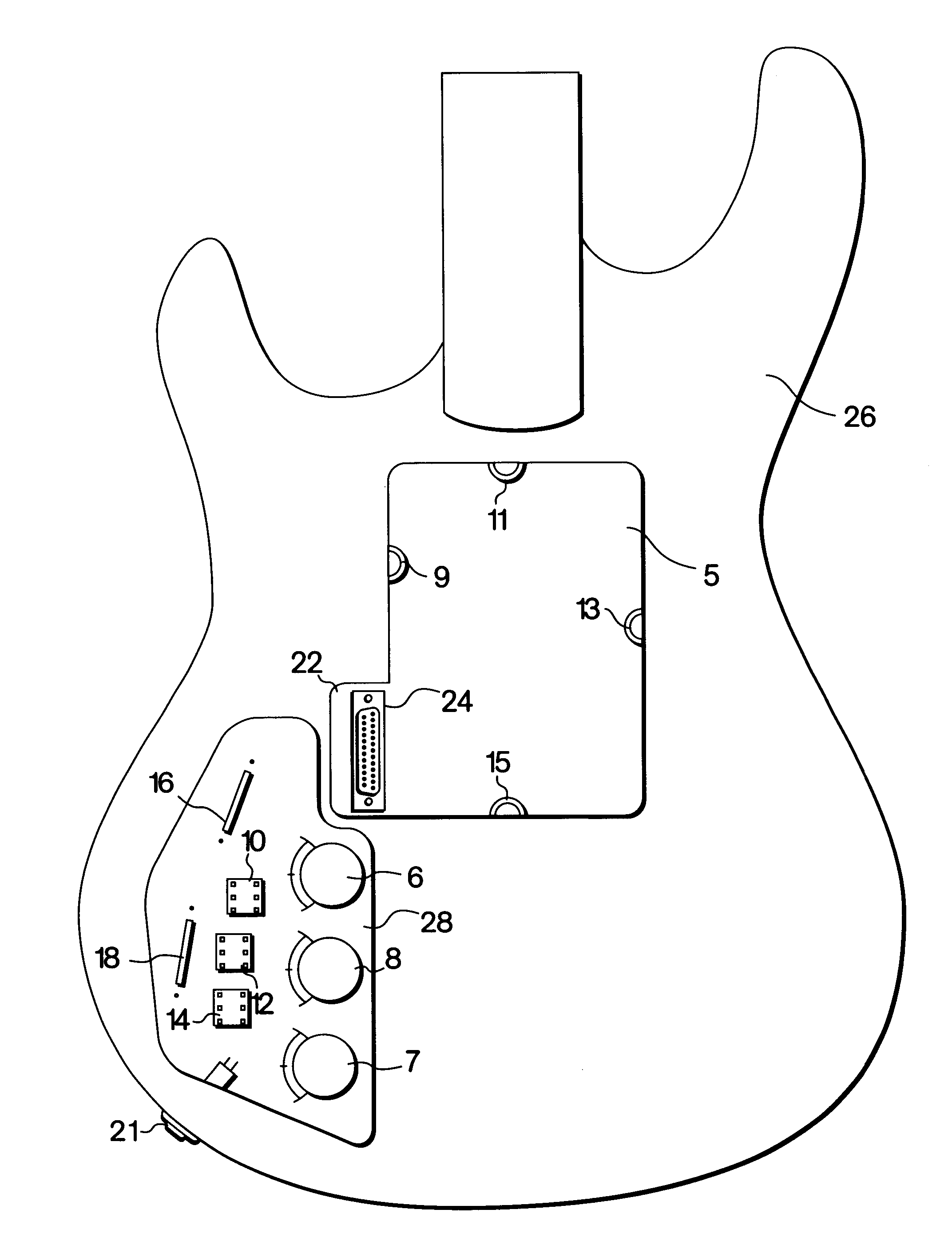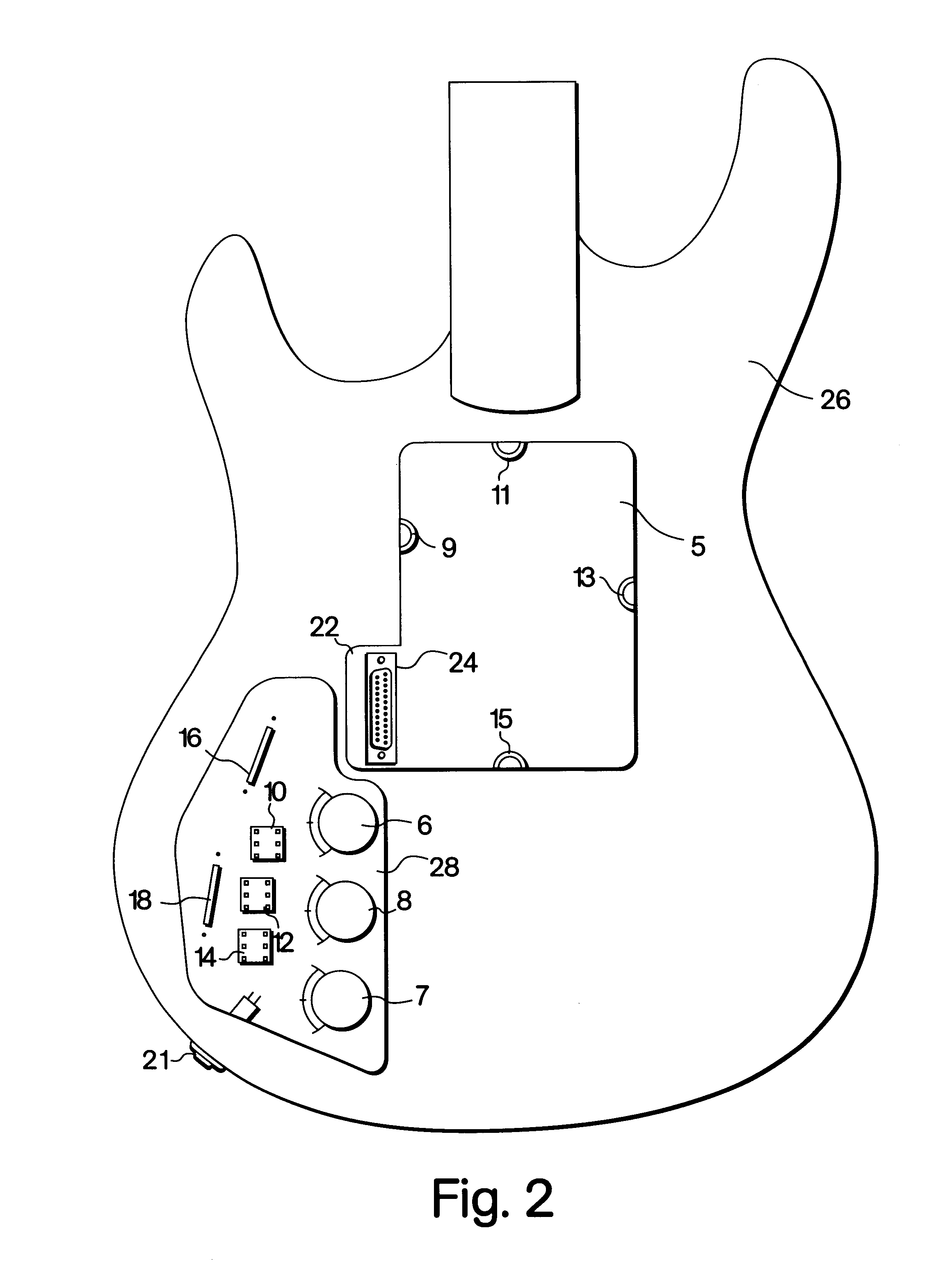Electric stringed instrument with interchangeable pickup assemblies which connect to electronic components fixed within the guitar body
a pickup assembly and guitar body technology, applied in stringed musical instruments, instruments, guitars, etc., can solve the problems of user's choice of pickup, limited to the sound options of new pickups, and only producing tonal qualities,
- Summary
- Abstract
- Description
- Claims
- Application Information
AI Technical Summary
Problems solved by technology
Method used
Image
Examples
embodiment
PREFERRED EMBODIMENT
Operation
The user of this present invention will maintain the guitar 1 (FIG. 1) to his own body in the customary manner, either with a guitar strap if standing, or without one if sitting. To install a pickup assembly into the body's cutout 5 (FIG.1), the user will grasp the guitar's neck / finger board 2 (FIG.1) with one hand and pull and pivot the instrument slightly away from his body to expose and provide access to cutout 5 and body connector 24 (FIG. 2). He will then slide the fingers of his other hand between baseplate 38A and strap 120 (FIG. 5) of any fully assembled pickup assembly (top views shown in FIGS. 3A, 3B, and 3C with baseplate connector 30; partial assemblies in isometric views shown in FIGS. 4A-4E) bringing the entire assembly toward cutout 5. After carefully positioning the assembly into cutout 5 so that the baseplate connector 30 properly lines up and mates with body connector 24 (FIG. 2), the assembly is given a firm push, engaging bullet catch...
PUM
 Login to View More
Login to View More Abstract
Description
Claims
Application Information
 Login to View More
Login to View More - R&D
- Intellectual Property
- Life Sciences
- Materials
- Tech Scout
- Unparalleled Data Quality
- Higher Quality Content
- 60% Fewer Hallucinations
Browse by: Latest US Patents, China's latest patents, Technical Efficacy Thesaurus, Application Domain, Technology Topic, Popular Technical Reports.
© 2025 PatSnap. All rights reserved.Legal|Privacy policy|Modern Slavery Act Transparency Statement|Sitemap|About US| Contact US: help@patsnap.com



